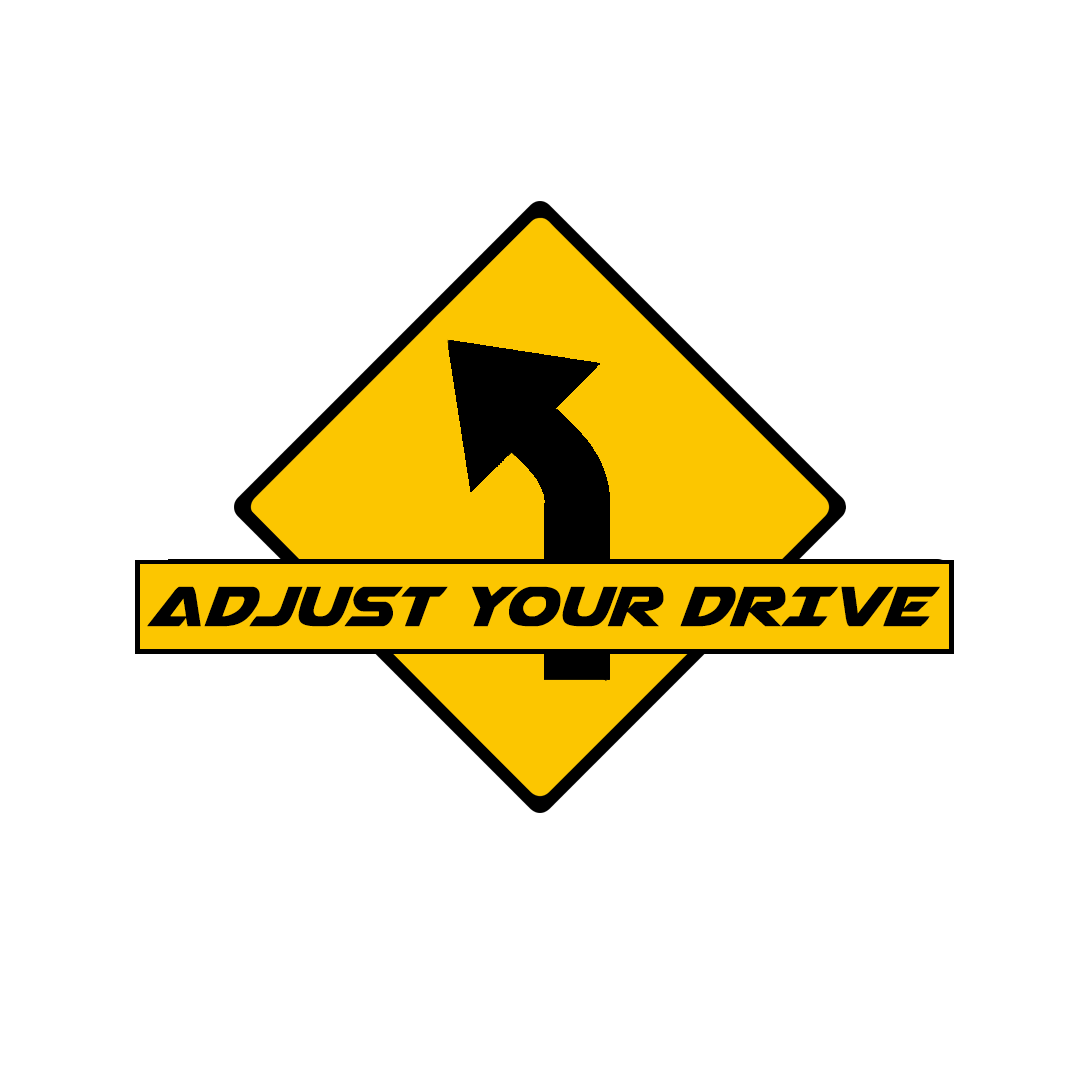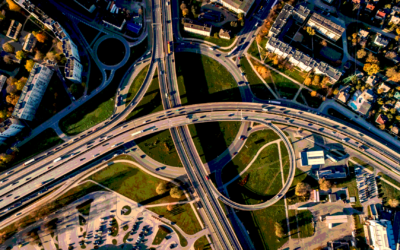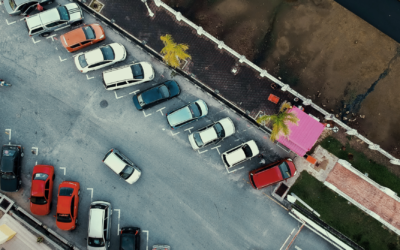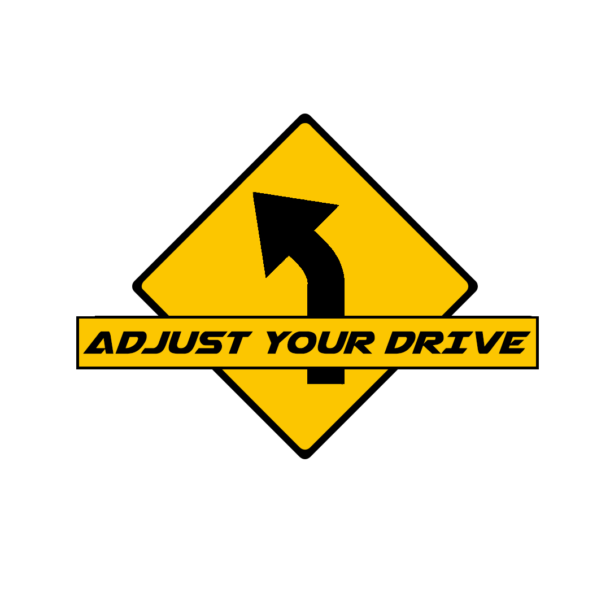Single car accidents are very common, accounting for 28.6% of all reported accidents according to the National Highway Traffic Safety Administration.
An accident involving one car is usually pretty cut and dry. But that’s not always the case. A single-vehicle accident can involve some odd situations. In this post, I will explain:
- The general rule for liability
- How your insurance handles single car incidents
- Alternate scenarios
- Why these accidents happen
- How to avoid being involved
- What to expect if you are involved
The General Rule
In a single-car accident, the driver of the vehicle is usually at fault.
The typical single vehicle collision involves loss of control of the vehicle. The driver has the responsibility to maintain control of their car at all times. The driver must account for all conditions, including traction and visibility. If you lose control of your vehicle, there is simply no one else to blame.
However, there are situations in which this rule may not apply. I’ll examine these below.
Insurance Investigations
When reporting a single car accident to your insurance company, one of the first questions you will encounter will actually be the biggest factor in claim handling. Is this a collision or comprehensive claim?
Collision Claims
Collision coverage is for damage to your vehicle due to collision with another vehicle or object. If you are driving your vehicle and hit a wall, building, tree, sign, or other object, that falls under collision.
If you roll your vehicle, that is a collision. You collided with the roadway. If you drive your vehicle into a body of water, that will typically fall under collision. The vehicle was under your control, and you collided with the water.
These collision claims will typically be an at fault accident on your insurance claim history. Your liability coverage may have to cover any objects you damaged. You may also be liable for injuries to passengers in your own vehicle.
Insurance companies will need to complete a thorough investigation. Typically this will start by getting a statement from you to determine what happened. This may be an informal statement if the facts are simple and undisputed. They may gather a police report, especially to check for property damage they will be responsible for.
Comprehensive Claims
Comprehensive coverage is for damage to your vehicle due to causes other than collision. This typically includes fire, theft, vandalism, weather, flying objects, flood, and animals.
So some things you may think of as single car accidents are actually comprehensive claims.
If you hit an animal, that falls under comprehensive. If your vehicle is hit by an object flying off a truck, that is under comprehensive. If someone steals your vehicle and crashes it, that is part of a comprehensive claim for theft.
Comprehensive claims typically don’t involve liability, and do not show as an at-fault accident on your insurance history.
Alternate Scenarios
So when might single vehicle accidents not be the driver’s fault? Can there be shared liability? And can you have liability on a comprehensive claim? Let’s dive into the more rare cases.
With liability, everything is situational. There are some instances where the driver of a single vehicle might not be at fault.
If there is another person involved, liability is not always clear. If you are involved in an accident with a pedestrian, cyclist, wheelchair, skateboard, or other means of transportation, that other person would have their own duties of care. Liability would need further investigation to determine fault.
To be clear, most traffic statutes put the overwhelming burden of safety on the operators of motor vehicles. A motor vehicle is a large, potentially dangerous piece of machinery. Even a small car can cause much more damage than a pedestrian. So the driver has the highest level of responsibility.
Pedestrian Duties
But even a pedestrian has a duty of care. You can’t just step off a curb and expect a car to stop on a dime. Pedestrians have their own legal requirements to obey crosswalk signals and keep a proper lookout. Pedestrians may have comparative negligence for stepping into the path of an oncoming vehicle.
You should also be aware that the type of pedestrian matters. As a driver, if you see a small child on the corner, you have an even greater duty of care than if you are approaching an adult.
I handled one claim with an injured child on his way to school. Thankfully, it was nothing major. But the point of impact was to the side door of my insured driver’s car.
If that had been an adult, there might be an argument that they stepped off the curb into the side of a vehicle, leaving their place of safety when they should have seen the car making their turn. An adult might hold some amount of fault. However, that argument just doesn’t hold up with a child. The driver should have stopped and yielded as soon as they saw a child walking toward the corner. As a safe driver, you need to anticipate that a child doesn’t have the same experience and awareness as an adult.
Wheeled Pedestrians
If the other person involved is on some other mode of transportation, their duty of care goes up. For instance, someone riding a skateboard on a sidewalk. They would typically have a duty to yield to pedestrians on foot. They would also have a duty to maintain proper control and a safe speed.
I handled a claim with a skateboarder who was coming downhill at speed on the sidewalk. They skated in front of a car that was pulling out onto the road from a parking lot. If this was a pedestrian, the car would likely have been 100% at fault. But I successfully argued that the skateboarder was traveling at an unsafe speed, as he admitted he was unable to stop. The driver was still majority (over 50%) at fault, because they didn’t see the skater. But they did not expect someone to be traveling at such a high speed on a sidewalk.
Cyclists in Traffic
Once you take your mode of transportation into the roadway, you are typically considered a vehicle. You have much the same duties of care as if you were driving a motor vehicle. Depending on the location, there may be extra rules and duties regarding cyclists, such as giving extra space and taking extra care to avoid a collision. But cyclists also have a duty to follow traffic laws.
So if you are rear-ended by a bicycle, it is handled the same as if you were rear-ended by a car. The cyclist, being part of traffic, has the duty to maintain a safe following distance. If they can’t stop for traffic they are following, it is their fault.
Vehicle Defects
If your loss of control is directly caused by a vehicle malfunction or manufacturing defect, you may not be fully liable. This is typically very hard to prove. The defect would have to be previously unknown, and in no way related to your maintenance of the vehicle. You can’t blame defective tires or faulty brakes if you have neglected their upkeep.
It would also have to be a direct cause. For instance, if your lane departure warning doesn’t sound, and you drive off the road, that would still be your fault. The safety system didn’t cause you to drive off the road, it just failed to sound that alarm as it was happening.
Road Defects
Maybe even harder to prove would be liability on a government entity related to something like poor road design.
States have clear statutes that the driver is responsible for adapting to the road conditions. That includes things like traction and visibility. So if a roadway pools water every time it rains, you are responsible for ensuring you can drive through safely. If you cannot, you need to go a different way.
If you come to a stop sign and cannot see traffic on the road you are crossing, it is up to you to not cross there. An overgrown bush may present an unsafe situation, but that doesn’t mean a driver can just hope for the best. The driver still needs to ensure the way is clear before crossing.
Liability in Comprehensive Claims
As I stated above, most comprehensive claims do not involve liability. It’s not anyone’s fault if a tree branch falls on your roof.
However, there are some cases where negligence and liability do apply.
For instance, hitting an animal is a comprehensive claim. Animals don’t follow traffic laws, and can be unpredictable, especially in the dark.
But in one example, involving a drunk driver and a cow, I had to investigate and accept at least partial liability. One of the biggest factors in forcing the investigation was the presence of an injured passenger. The passenger was pursuing an injury liability claim, which only pays out if the driver was at fault.
Based on the details of the statements, I believe the driver had partial fault. The cow was stopped or moving slowly, it was there to be seen. The driver was impaired and did not react in time. There was also comparative negligence on the passenger. They knew the driver had been drinking and chose to get in the vehicle, which was a mitigating circumstance. I don’t remember the exact percentages and numbers involved, but I don’t think that friendship lasted long.
Why Do These Accidents Happen?
The majority of single vehicle collisions boil down to one of three things. Lack of lookout, loss of control, and driver impairment.
Some drivers simply don’t see an obstacle. These are often low speed accidents, especially when the car is backing. These accidents typically cause minor property damage. But if a pedestrian is involved, even a low speed accident can result in serious injuries.
Loss of control is common, especially in hazardous conditions. When traction is reduced, it doesn’t take much to lose control, even when traveling under the speed limit. The driver of the car always has a duty to know their vehicle and drive for the current conditions of the roadway.
Driver impairment simply makes everything worse. Whether it’s drugs, alcohol, or talking on a cell phone, these impairments cloud your judgement and delay your reactions. Impairment and driving do not mix.
How to Avoid Single Car Accidents
As a driver, avoiding single vehicle crashes comes down to awareness. You need to take seriously the responsibility of getting behind the wheel. Just because you do it every day doesn’t make it any less dangerous.
Take note of your surroundings as you approach your vehicle. Look for obstacles you might not see from the driver’s seat. Avoid those embarrassing low speed accidents.
When on the road, be cognizant of your vehicle’s limitations. Drive for the current conditions.
Be particularly careful in unfamiliar areas. Just yesterday I watched a dashcam video of a driver who missed their exit at night. They took the next one, thinking they had plenty of time to slow for a nice gentle off ramp. But this exit had an immediate right turn.
The driver was going faster than the reach of their headlights. By the time they saw the turn, they could only slow a little before launching into a field. Thankfully they were not seriously hurt.
What to Expect If You Are Involved
First, before you have an accident, make sure you are properly insured. If you can’t afford to replace your vehicle tomorrow, you need to be carrying collision and comprehensive coverage. No one plans on these things happening, yet they do. In a single vehicle accident, you only have your own insurance policy to cover your vehicle damage. Review your insurance coverage now to avoid problems in the future.
You will need to contact your car insurance company to report a claim. I always say call in a claim, but you can often do that online or through an app now. Your insurance will determine if this is a collision or comprehensive claim, and set up an inspection for the damages.
If you have rental coverage, you will be able to use it while your vehicle is being repaired. If your vehicle is not drivable, you will be able to use a rental right away. Your rental is covered up to the limits of your policy.
If you are hurt, the medical coverage on your auto policy is first in line to pay your bills. That may be Personal Injury Protection (PIP), or Medical Payments Coverage (MedPay). If you do not have coverage on your auto policy, you would use whatever health insurance you have available.
If you damaged any objects or structures, your property damage liability coverage will cover those costs, up to your policy limits.
If you think anyone other than yourself may hold responsibility for your accident, you will need plenty of documentation. Take photos at the scene of the accident. Gather any witness information. Make your insurance aware of your concerns immediately. Remember, with a single-car collision, they will start by assuming it was the fault of the driver.
If you are in one of those very rare cases where you think a vehicle or road defect is to blame, I would recommend consulting an experienced attorney. If you need to pursue a government agency or an auto manufacturer, you do not want to do it alone. You will need someone to arrange expert testimonies and navigate complicated legal pathways. Those are not simple cases.
Accident Victims
If you have been hit by a single vehicle, as a pedestrian or on any other unpowered personal transportation, your first step is to seek medical attention. You need to know how to handle your medical expenses. This can be complicated, as it varies based on your state.
In some states the PIP or MedPay of the striking vehicle is primary, regardless of fault. In some states the pedestrian’s PIP or MedPay is primary, even though they were not driving their insured vehicle. Either of these may also be secondary coverage. Typically your personal health insurance will come after at least one of these auto coverages. Last in line is any Medicare or Medicaid coverage.
If you are an injured passenger in a single-vehicle accident, the PIP or MedPay of the vehicle you are riding in will be your primary coverage. If you have your own auto policy with PIP/MedPay, that would be a secondary coverage.
Separate from covering the bills, you may have an injury liability claim against the at-fault driver. Injury liability claims are always paid as a one-time settlement. This typically includes both economic and non-economic damages.
Economic damages are the solid numbers. This can include medical bills, ambulance bills, prescription drug costs, and lost wages due to your injuries. If these costs have been covered by your insurance, then part of your settlement will reimburse them. If the at-fault insurance company has already covered your bills through PIP/MedPay, then those costs will not be included in a settlement.
Non-economic damages are intangible items. This is often called general damages, or pain and suffering. Financial compensation varies widely depending on the details of your case, including the diagnosed injuries, treatment provided, impact on your personal life, venue (the location of your case), and many other potential factors. Each injury case is as unique as the person who was hurt.
You will typically need to sign a release before any payment is made for the liability claim. Remember, in cases of injured passengers or pedestrians, the injury liability claim is separate from the PIP/MedPay claim.
Do I Need a Lawyer?
As a former adjuster, I cannot and do not give legal advice. I cannot tell you what your claim is worth or if you need legal counsel. What I can tell you is that an injury settlement is an agreement between you and the at-fault insurance company. Those two parties are the only ones who can finalize an agreed settlement amount.
You are not required to have an attorney handle your injury claim. I have settled countless injury claims directly with the injured party.
Your role as a claimant in a personal injury claim is to provide proof of injury, most often in the form of medical records. The insurance company you’re dealing with can usually be of help. It is standard practice for the adjuster to offer a medical authorization, which lets them collect the records for you. Or, you can collect your own records and send them to the adjuster.
If you are someone who wants to handle your claim on your own, you can in most cases. I plan to provide most detailed information on injury handling in the future, which I will link here.
If you do feel you need legal representation, or just to review your legal rights, you can contact a personal injury lawyer in your area. An experienced lawyer may be able to give you more detailed information about the specific laws in your state, as well as their opinion of the value of your claim. Personal injury attorneys will often give a free consultation to discuss the major facts of your case.
If you do consult an attorney, make sure you find someone local. They will know your venue better than a large firm from out of the area.
Explore more accident types here.






0 Comments